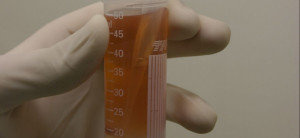Effect of umbilical cord blood stem cell transplantation in the treatment of neonatal rats submitted to the germline / intraventricular hemorrhage model
Project Coordinator: Jaderson Costa da Costa, MD, PhD
Researcher: Pamella Azevedo, MSc (Project developed during the Masters)
Summary of the work: Hemorrhage of the germline / intraventricular matrix (HMG / IV) is the most common neurological complication of newborns, affecting about 50% of premature babies aged less than 34 weeks. gestational or weighing less than 1500g. This event is an important cause of childhood mortality and morbidity. Statistics suggest that newborns with moderate to severe hemorrhagic injury are highly predisposed to developing post-hemorrhagic hydrocephalea, hemiplegia, epilepsy, cerebral palsy and mental retardation, while those affected by mild-grade injury are at risk of developmental disabilities .
The treatment of HMG / IV is limited to supportive measures and is not aimed at restoring the neonatal brain injury process. This observation encourages research that aims to find alternatives to maintain neuronal integrity during the disease process. Thus, the study seeks to investigate whether stem cells from human umbilical cord blood have therapeutic potential in preventing motor and cognitive deficits in neonatal rats submitted to the HMG / IV model.



